Remove the radiator cap, wet its seal with engine coolant, and then install it on a pressure tester.
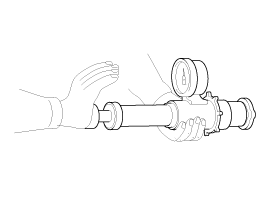
Remove the radiator cap, wet its seal with engine coolant, and then install it on a pressure tester.

Apply a pressure of 93.16 ~ 122.58 kPa (0.95 ~ 1.25 kgf/cm², 13.51 ~ 17.78 psi).
Check for a drop in pressure.
If the pressure drops, replace the cap.
Wait until engine is cool, then carefully remove the radiator cap and fill the radiator with engine coolant, then install it on the pressure tester.
Apply a pressure tester to the radiator and apply a pressure of 93.16 ~ 122.58kpa (0.95 ~ 1.25kg/cm², 13.51 ~ 17.78psi).
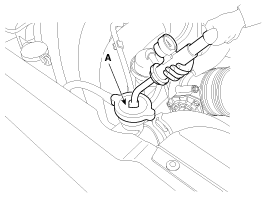
Inspect for engine coolant leaks and a drop in pressure.
Remove the tester and reinstall the radiator cap.
Check for engine oil in the coolant and/or coolant in the engine oil.
Remove the cooling fan.
(Refer to Cooling System - "Cooling Fan")
Remove the radiator upper hose (A).
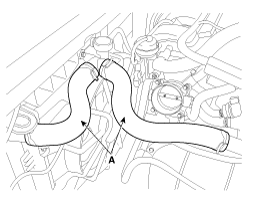
Remove the radiator lower hose (B).
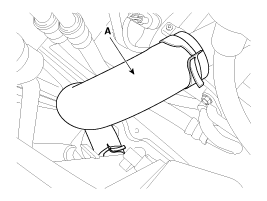
Install the radiator hoses as shown illustrations.
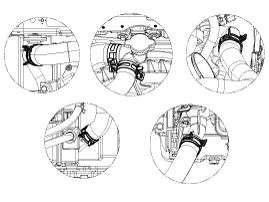
Disconnect the ATF cooler hoses.
(Refer to Automatic Transaxle System - "Automatic Transaxle")
Remove the front bumper cover.
(Refer to Body - "Front Bumper Cover")
Remove the air guards (A).
Tightening torque :
3.9 ~ 5.9 N.m (0.4 ~ 0.6 kgf.m, 2.9 ~ 4.3 lb-ft)
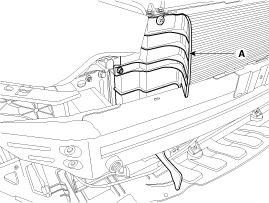
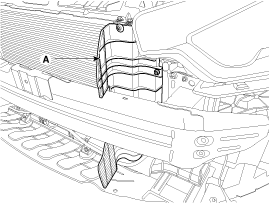
Loosen the mounting bolts (A) and then remove the radiator upper brackets (B).
Tightening torque :
6.9 ~ 10.8 N.m (0.7 ~ 1.1 kgf.m, 5.1 ~ 8.0 lb-ft)
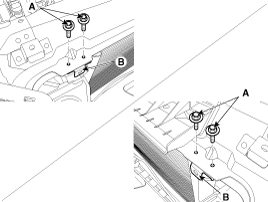
Remove the A/C condenser from the radiator assembly and then lift up the radiator assembly (A).
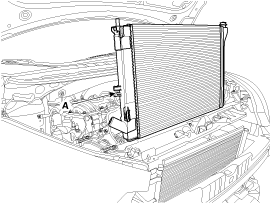
Install in the reverse order of removal.
Fill the radiator with coolant and check for leaks.
Bleed air from the cooling system.
Start engine and let it run until it warms up (until the radiator fan operates 3 or 4 times).
Turn off engine. Check the coolant level and add coolant if needed. This will allow trapped air to be removed from the cooling system.
Put the radiator cap on tightly, then run engine again and check for leaks.